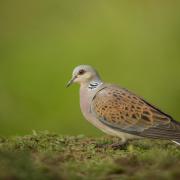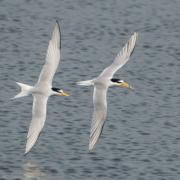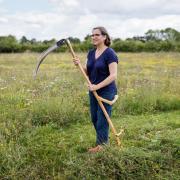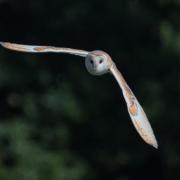The arrival of May is traditionally marked across the northern hemisphere with celebration. Winter, after all, is now behind us, and John Grant finds plenty to rejoice about in the Suffolk countryside
Bursting into life
“May the force be with you.” Or, in the very real and really wonderful world of Suffolk rather than some Hollywood fantasy film, the catchphrase ought to be “Nature’s force is with you in May.”This is the month, more than any other, in which the full force of Suffolk’s natural treasures can beguile and bewitch, excite and entertain or simply knock you off your feet with their dazzling diversity.On just about every square inch of Suffolk – wild, natural Suffolk, that is – you can sense the pulsating reaffirmation of life that’s going on. It’s as if every single organism is driven by the urge, the irresistible, imperative urge to procreate, to pass on those genes to the future – to keep the species going, at all costs.To witness this ever-amazing, always humbling and gigantically thrilling critical stage in the circle of Suffolk life is something which many naturalists virtually live for. Out in the county’s woodlands, on its heathlands and wetlands, along its coastline, in May. There surely cannot be a more inspiring place than any of these in the whole of our country can there? And certainly not a more inspiring time.For its range of species, Suffolk is rightly renowned as being at the very forefront of spring nature-watching – it’s hardly surprising when you consider its range of special habitats that support such highly specialised communities of wildlife in so many forms.Take the birds. Birdwatchers from all corners of the country converge on Suffolk in May and it’s not hard to see why. Out on the coast on a May day it’s possible to see more than 100 species – and that’s just before breakfast!A major reason for this ornithological bonanza is the miracle of migration. Heath, reed, woodland and wetland habitat by now has enticed the species that will breed with us – some coming in from warmer winter climes far to the south. But because of Suffolk’s geographical position, it also acts as a staging post for birds which are pushing on still further north, in some cases well into the Arctic Circle.At the forefront of this awe-inspiring effort to reach prime breeding territories are the waders. Some will have been travelling north from such far-flung places as South Africa, aiming to reach the vast Arctic taigas and tundras at just the right time. Too soon and the wastes will still be frozen and invertebrate prey items will be unavailable, too late and they will not have enough time in the short Arctic summer to complete their breeding cycle.So it is that in May, Suffolk’s wetlands, such as the Suffolk Wildlife Trust’s Trimley Marshes reserve, near Felixstowe, or the RSPB’s world-famous Minsmere reserve, near Westleton, can be packed with northward-bound waders – black-tailed godwits heading for Iceland, bar-tailed godwits, grey plovers and little stints and curlew sandpipers heading for Siberia, ruff pushing on to northern Europe to name but a few.With all this global movement taking place comes the possibility that some individuals may get their navigation slightly wrong and end up way out of range as vagrants on a foreign shore. These are the rare visitors that add spice to the birder’s day, the surprise finds that send the pulses – and the twitchers – racing. And it’s not just waders that can present these red-letter days. In May just about any migratory bird can turn up in Suffolk, and frequently does!Add to these star turns the more predictable Suffolk specialities – such as bittern, marsh harrier, bearded tit, avocet, golden oriole, nightjar and the like – and we have a magical mix for anyone with even the slightest interest in avian matters.Suffolk may well be renowned primarily for its birds but, of course, our corner of the natural world has plenty of other delights to enthral us.With the expected rise in temperatures and the increased daylight hours comes burgeoning, beautiful plantlife. Our old friend Peter Lawson, a Suffolk Wildlife Trust stalwart takes up the story.Abiding memories of May are the dominating white of hedges and hedge banks, the former covered with the traditional May blossom while the banks below are smothered with masses of delicate cow parsley, he says. Early May also brings the first flush of golden dandelions, often dominating road verges and meadows.In Breckland and the Sandlings, most people walk on short turf unaware of its secrets, but if you get down on hands and knees there are wonders so small as to be invisible from six feet up. Pale yellow birdsfoot, blue early forget-me-not, pink cranesbills and many more can be found between Thorpeness and Aldeburgh, or at Rampart Hill Field, Icklingham.The remote common land at Chippenhall Green, Fressingfield, can provide a colourful sight early in the month, when six-inch high green-winged orchids in shades of pink, white and purple, flower in an almost medieval setting (but beware of horses, which have been known to scratch cars!)On the very last day of the month, the wonderful military orchids will be on view near Barton Mills, when the Forestry Commission holds its annual Open Day at the orchid’s best site in Britain. This will be on Monday, May 31, from 10am to 3pm, with parking and access signed off the A1101 road.With the onset of May, it’s not only birdlife and plantlife that will capture the Suffolk naturalists’ attention. Across many of our ponds and along many of our streams and rivers a group of insects that are a quintessential part of a Suffolk summer is starting to appear – odonata – the dragonflies! As the next few months unfold, Naturewatch will be paying more attention to this group, and also to the butterflies that fill our summer days with such joy. For now, we can pay homage to spring – the lazy, hazy days of summer are ahead of us. In the here and now – gloriously – is our rite of spring.
Now's the time to see...
Adder: Much-maligned, simply because it is Britain’s only venomous snake, the adder can often be seen on a warm May day basking on some sunlit track, particularly on the Suffolk Sandling heaths. Okay, it can bite with some unfortunate effects. But if we give this creature a break – by giving it a wide enough berth – we can appreciate its beauty. In truth, it is far more likely to slip quietly away from view than cause you any problem, so watch from a few feet away and definitely do not touch it. You will see an attractive snake with a dark zig-zag marking along its length. Some are very dark indeed – the “Black Adder” of folklore – but all are worthy of our admiration.


























